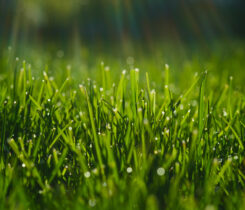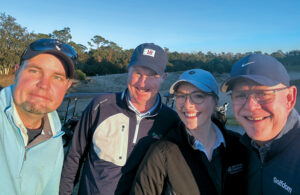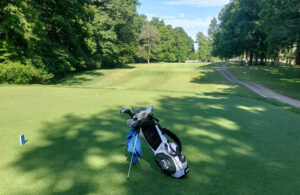Off the Record: The history of the Turfgrass Information File
The Turfgrass Information File (TGIF) is a remarkable success story of the USGA Green Section, a testament to the foresight and commitment of the organization. Michigan State University has provided information on turfgrass research and education for 40 years.

Photo: Mike Kenna, Ph. D.
In September 2023, MSU Libraries made the TGIF database publicly accessible to everyone. The release of the publicly accessible TGIF database coincides with the 40th anniversary of the partnership between the USGA and MSU Libraries.
In the early 1980s, the Green Section Turfgrass Research Program (now the Mike Davis Program for Advancing Golf Course Management) identified a pressing need: a comprehensive turfgrass research reference library accessible through a computerized database.
This initiative eventually led to the establishment of TGIF and a lasting partnership with the O.J. Noer Memorial Turfgrass Collection at the Michigan State University Libraries.
The O.J. Noer Memorial Turfgrass Collection, named in 1968, originally belonged to O.J. Noer, who amassed a wealth of turfgrass science, culture and management literature during his career. His collection found a home at Michigan State University, thanks to the efforts of Drs. James Beard and Richard Chapin.
Digital world
In 1983, the Green Section Research Committee sought proposals to develop a computerized data bank and make it accessible to turfgrass researchers. The vision was to centralize turfgrass research data worldwide and offer valuable information to the golf industry.
At the time, turfgrass literature was rapidly expanding, but it was scattered across various locations. Through the research committee, the USGA realized that turfgrass literature was rapidly growing and widely dispersed in the U.S. and other countries.
Despite the promising progress in collecting literature and building the database, remote access to TGIF was challenging in the late 1980s. Dial-up procedures and slow-speed modems hindered easy access, and there were concerns about the flow of information. The USGA had already invested $400,000 in the project, so the research committee aimed to simplify access.
More than 25,000 materials were in the database by 1992. While online computer searches improved, the only way to access full articles was to have a physical magazine or journal.
The growth of the internet from 1992 to 1995 revolutionized access to TGIF. The transition from a text-based internet to graphical web browsers like Netscape Navigator enabled online browsing. TGIF adapted to support internet access in 1993 with USGA funding, catering to users’ desire to read articles online.
By 1997, TGIF was available on the internet, with the growing demand for online article browsing. The collection had expanded to over 42,000 entries and 300,000 keywords.
Securing the future
In 1998, Michigan State University Libraries secured the future of TGIF by establishing an endowment to support staffing and maintenance. The USGA pledged $1,000,000 toward this endowment, which aimed to reach at least $2,000,000. Interest from the endowment would fund ongoing operations, ensuring the database’s longevity.
The endowment secured TGIF’s future and kickstarted digitization efforts enabling users to read articles online. The USGA Green Section Record was first, followed by professional and trade magazines, including Golfdom.
Today, TGIF is more than just a database; it’s the world’s turfgrass science and culture library, with more than 305,000 records, and it continues to grow daily. More than 65 percent of the records link to full-text documents.
The visionary efforts of the USGA Green Section Turfgrass Research Committee, combined with the USGA’s unwavering financial support, have made TGIF a valuable resource that will benefit generations to come. It has transformed how we access and utilize turfgrass literature, enhancing the field’s knowledge and application in the golf industry and beyond.












